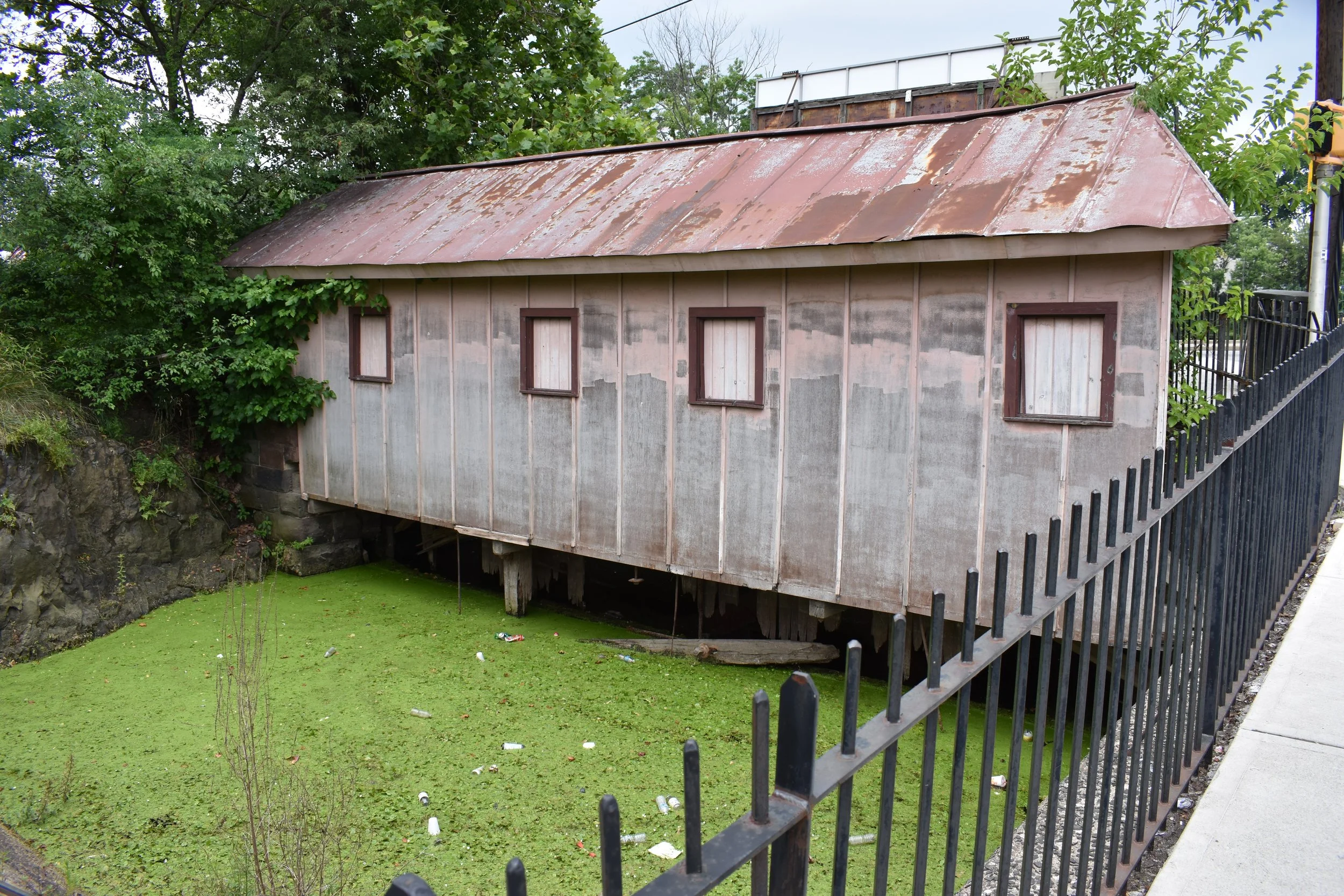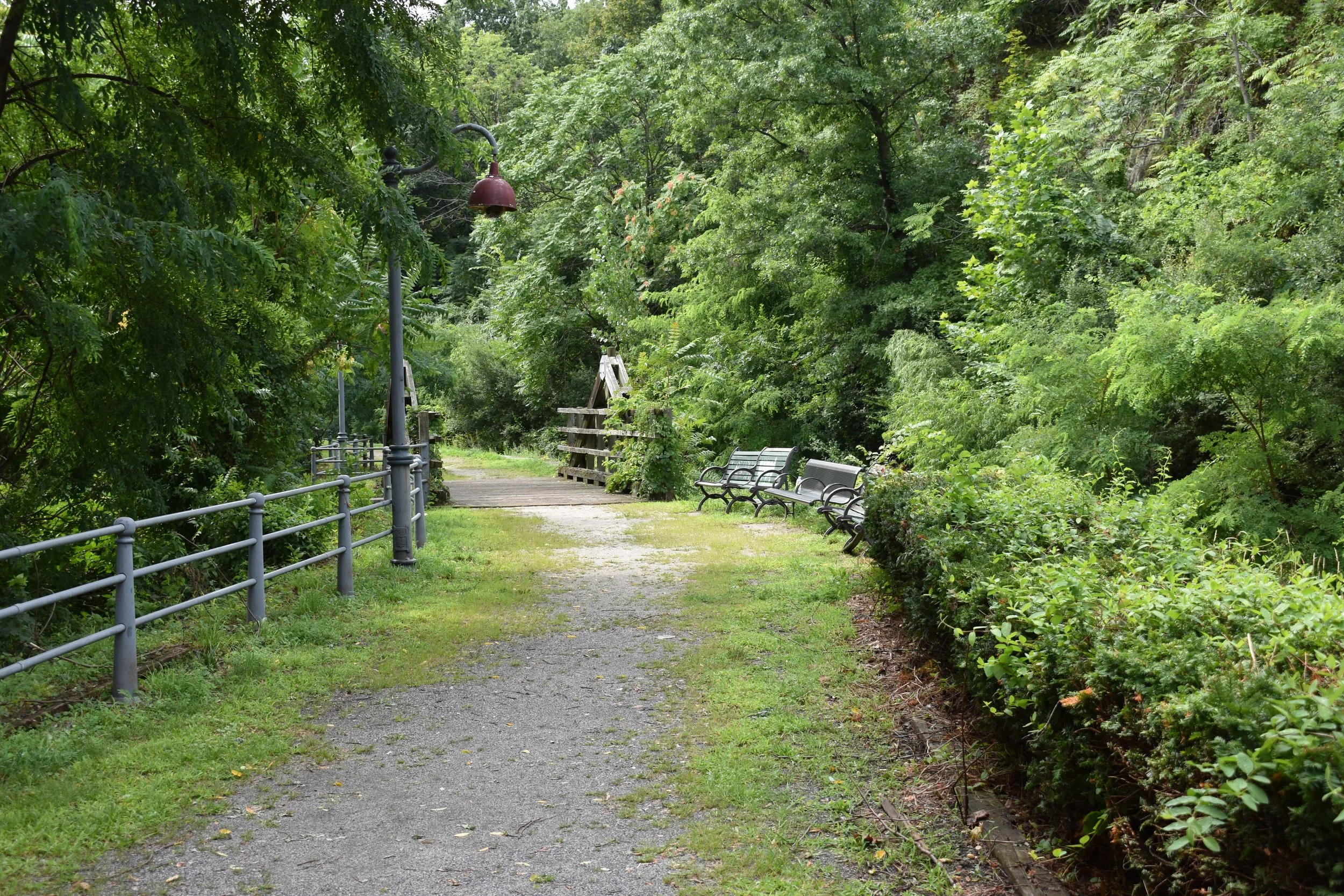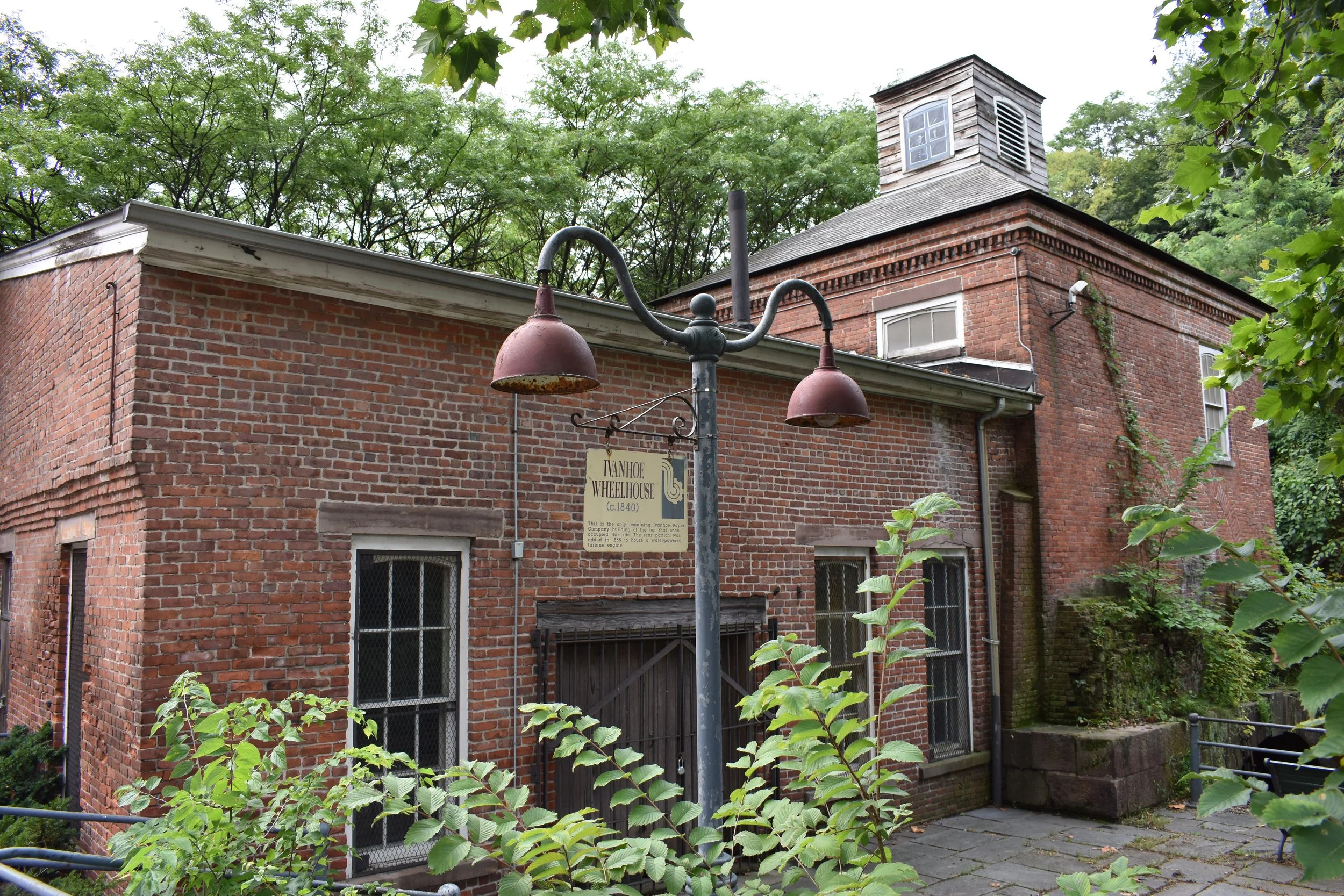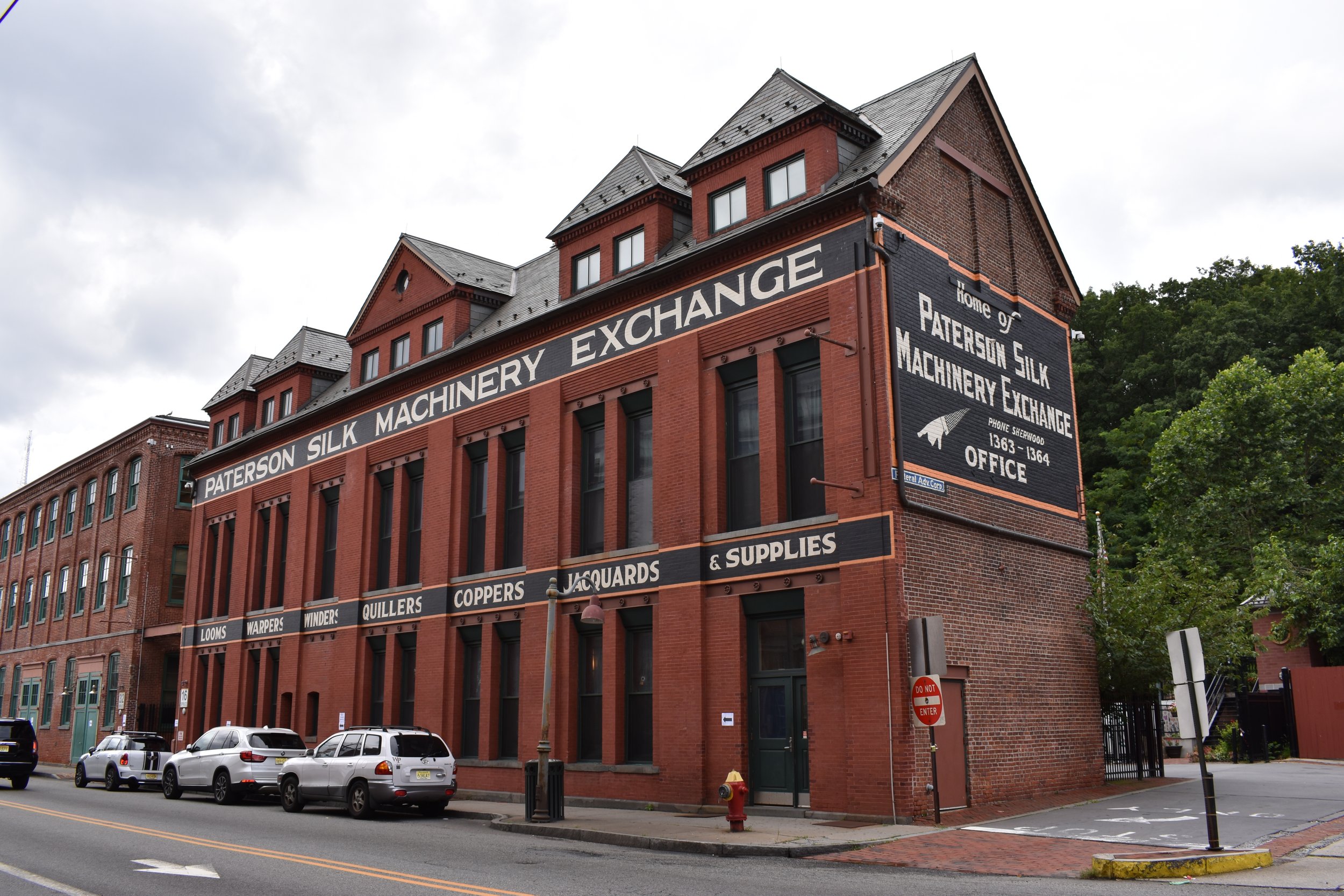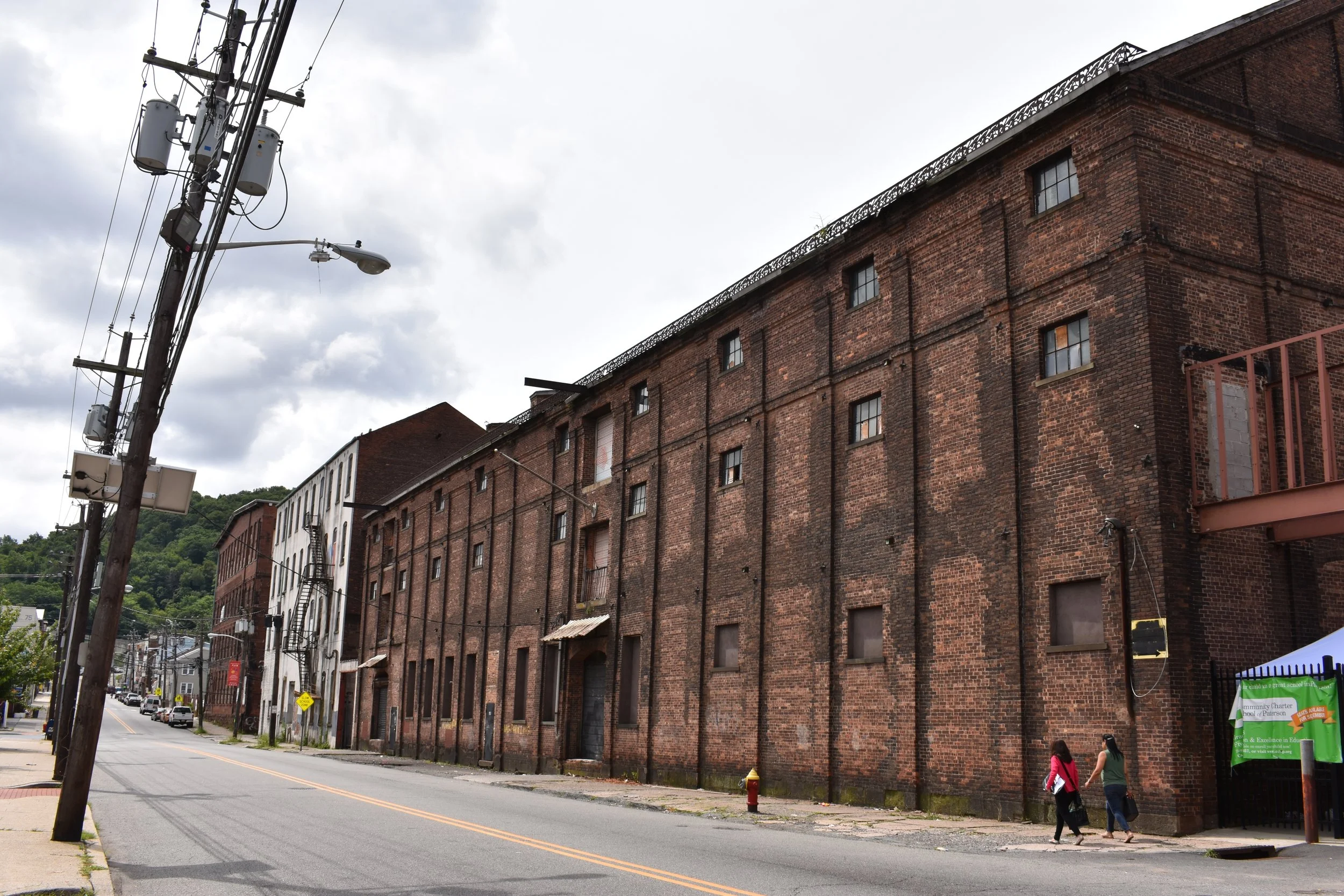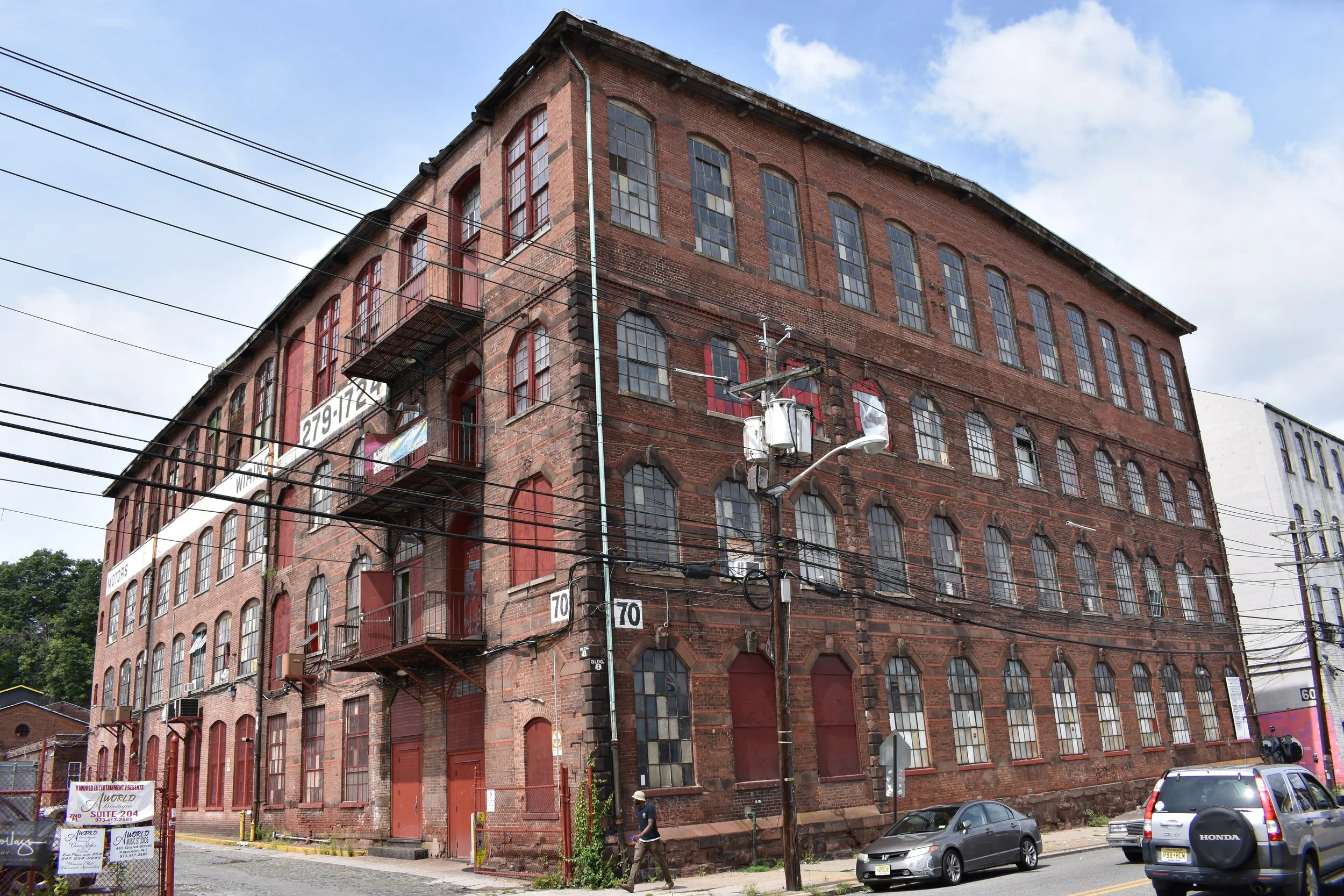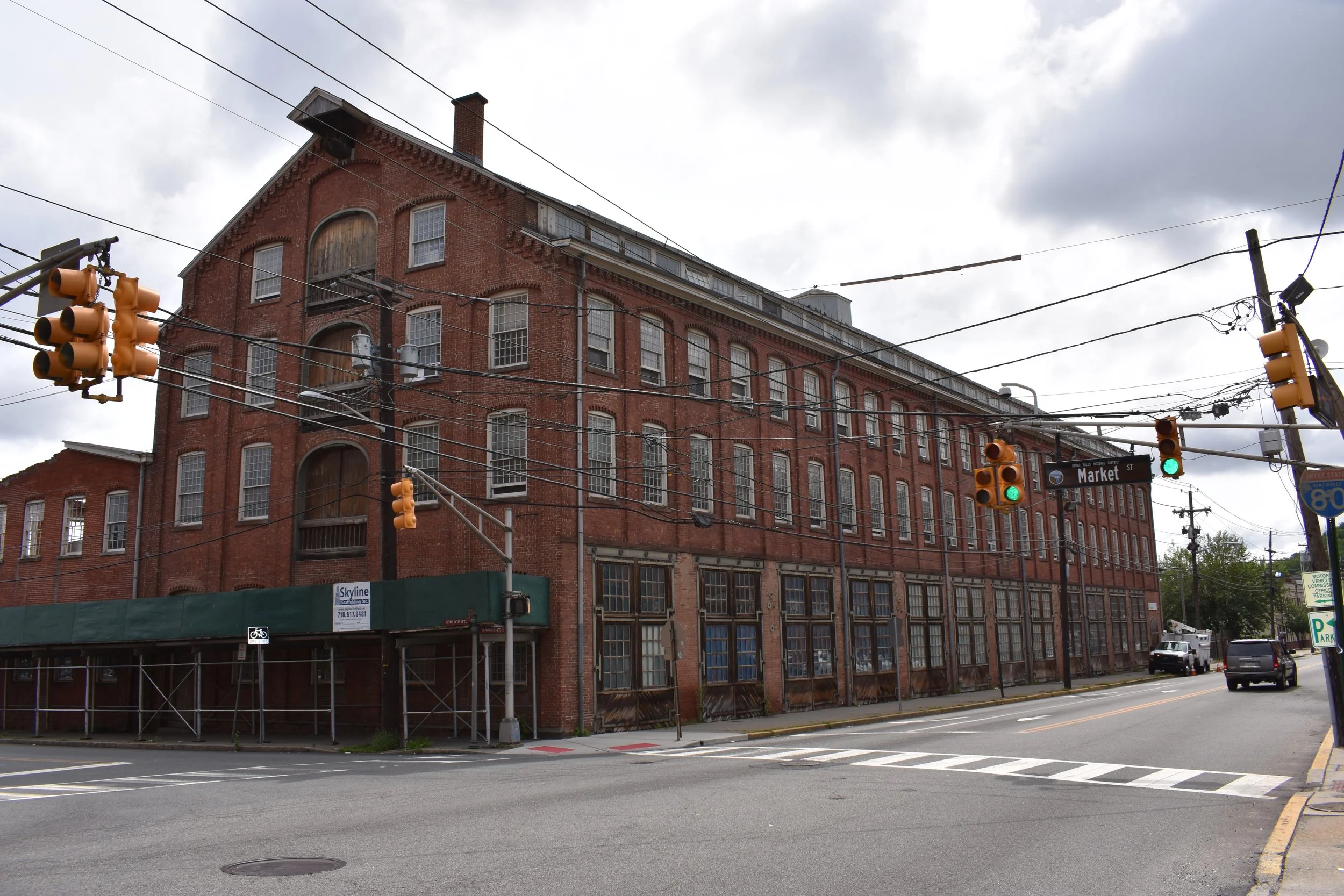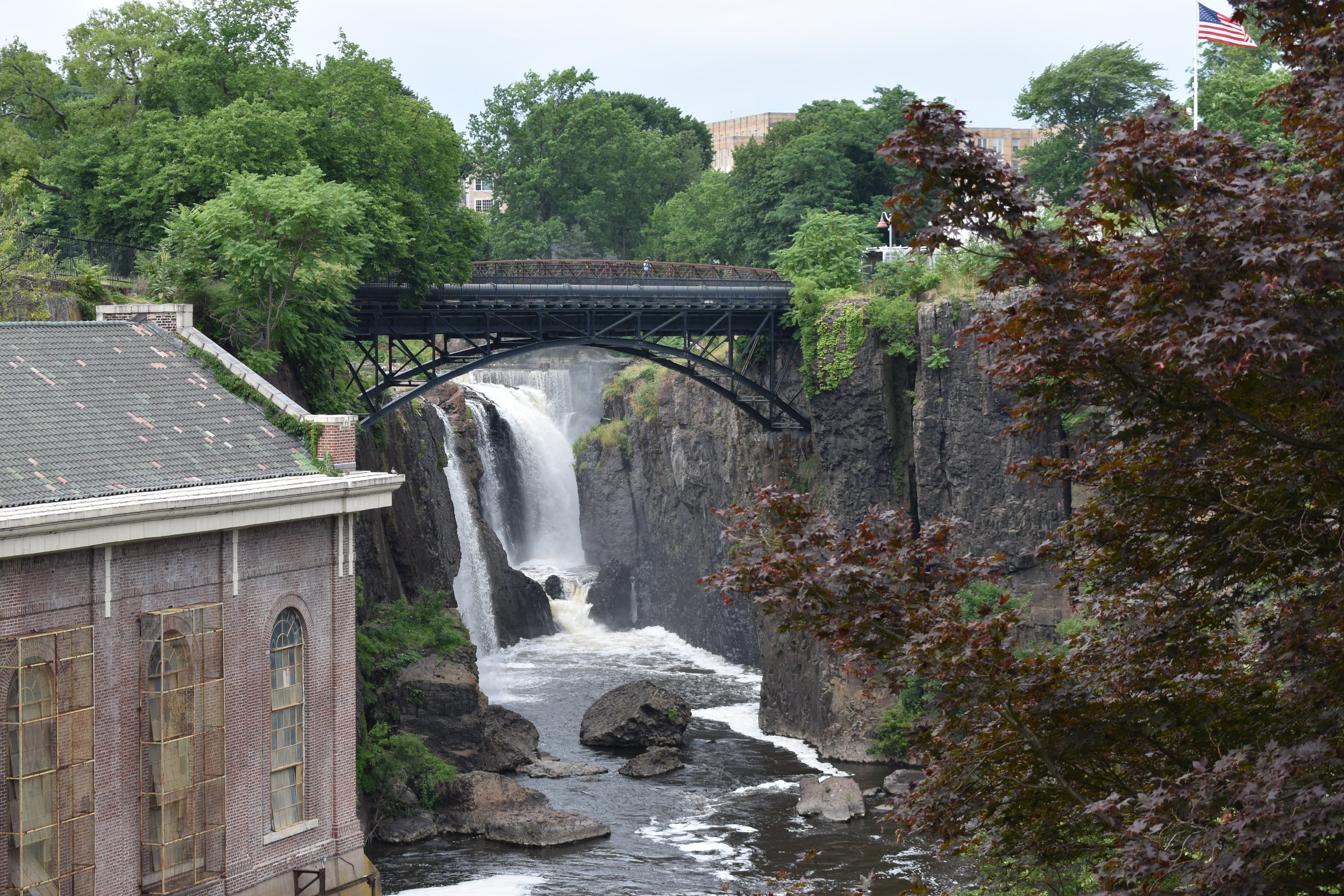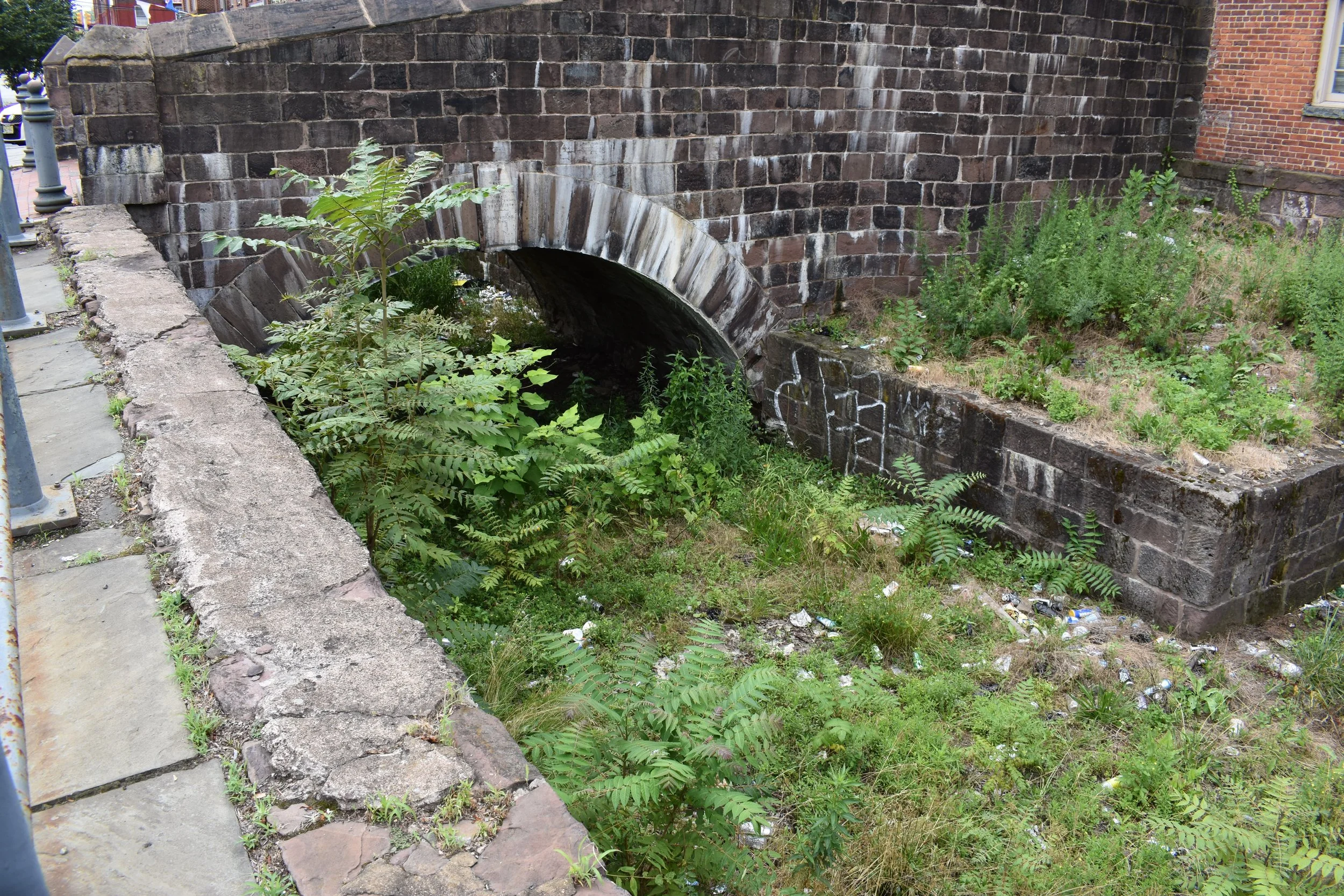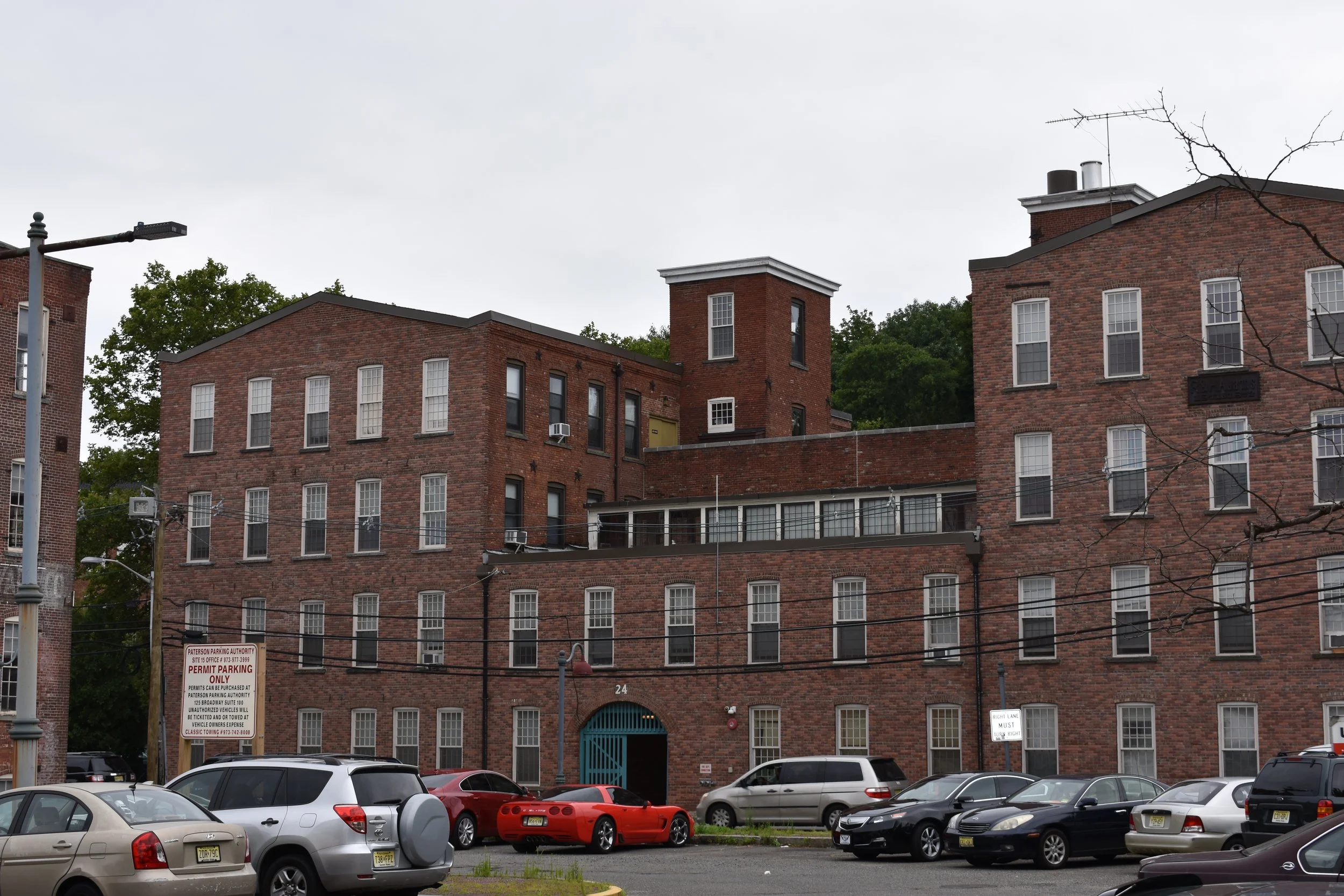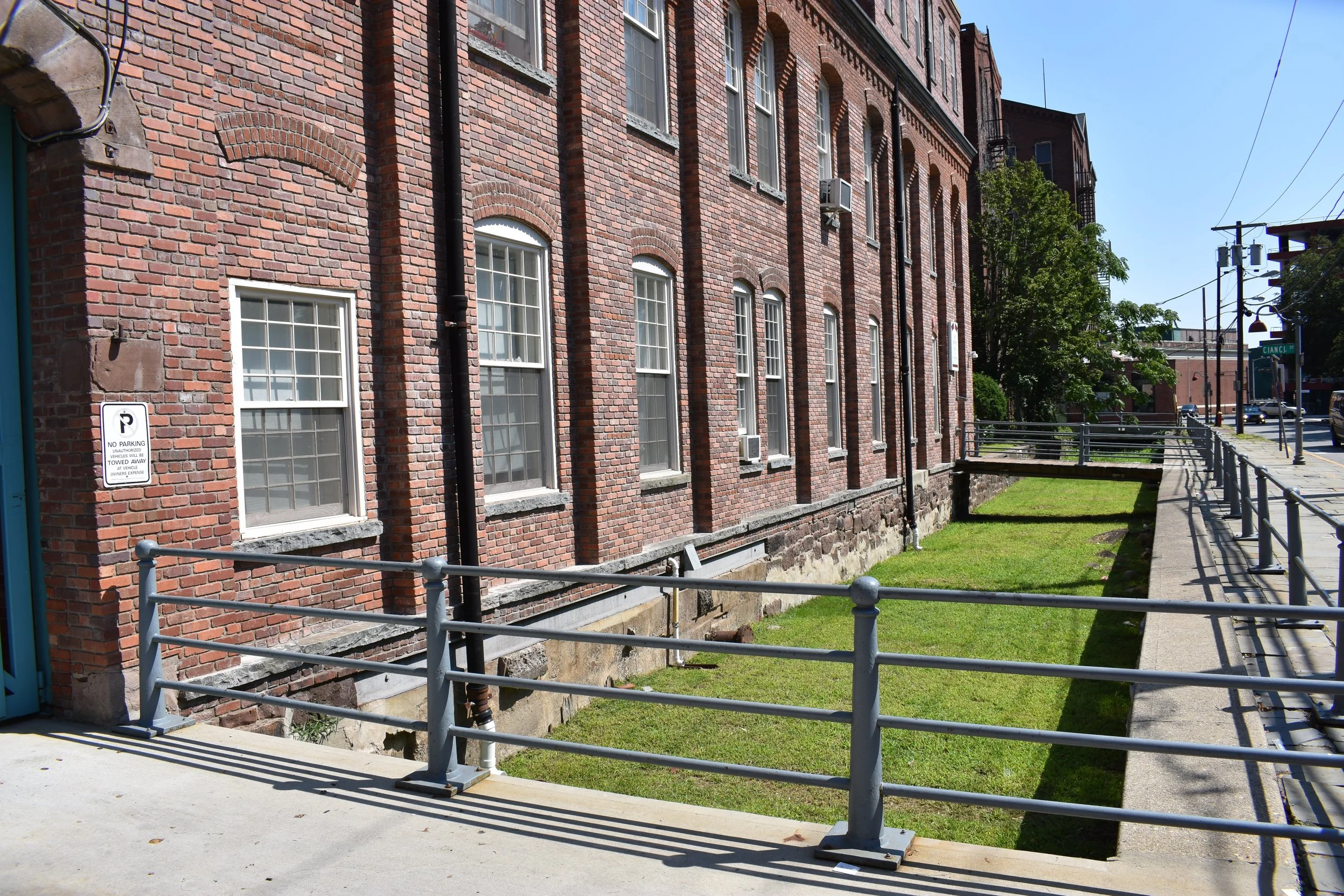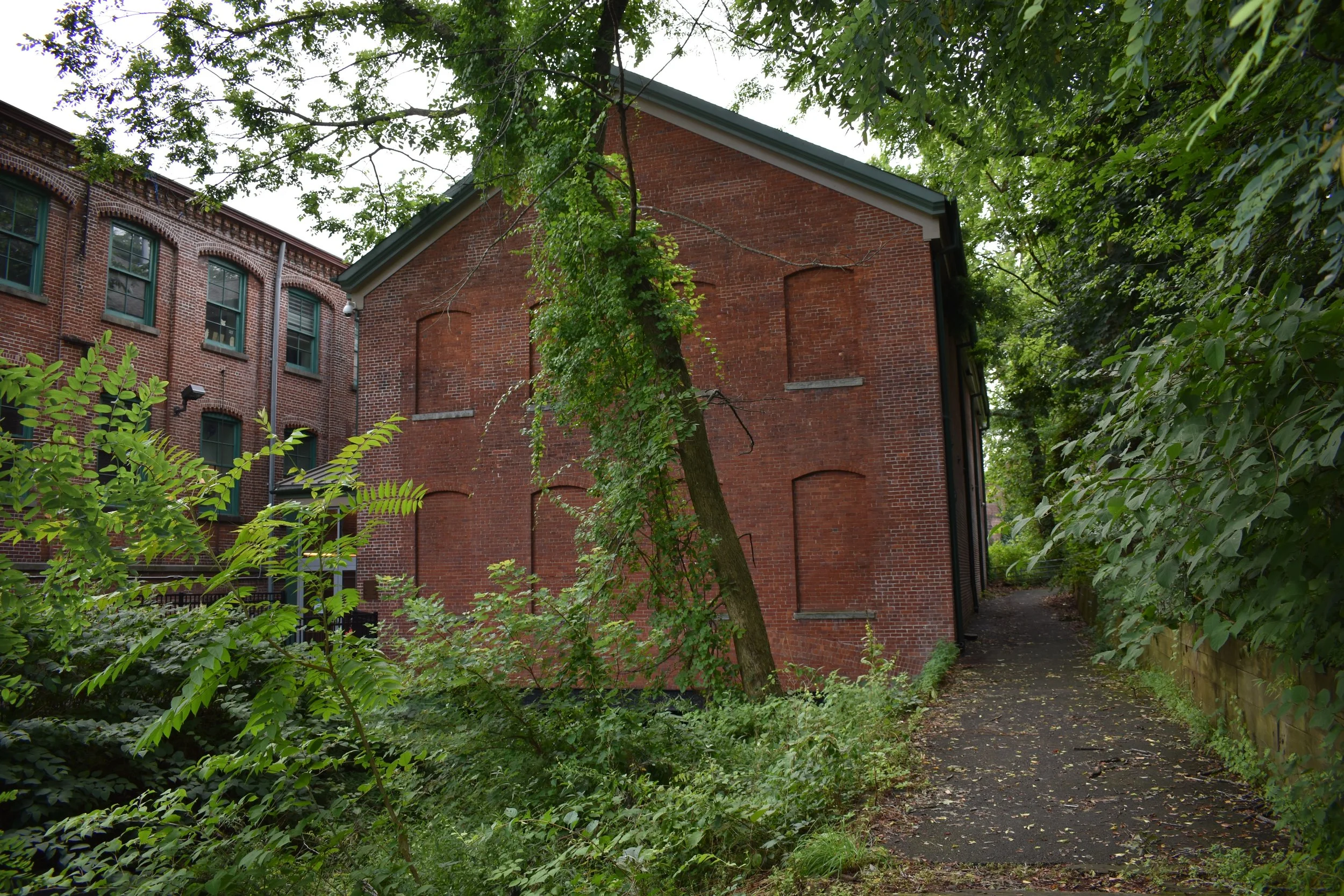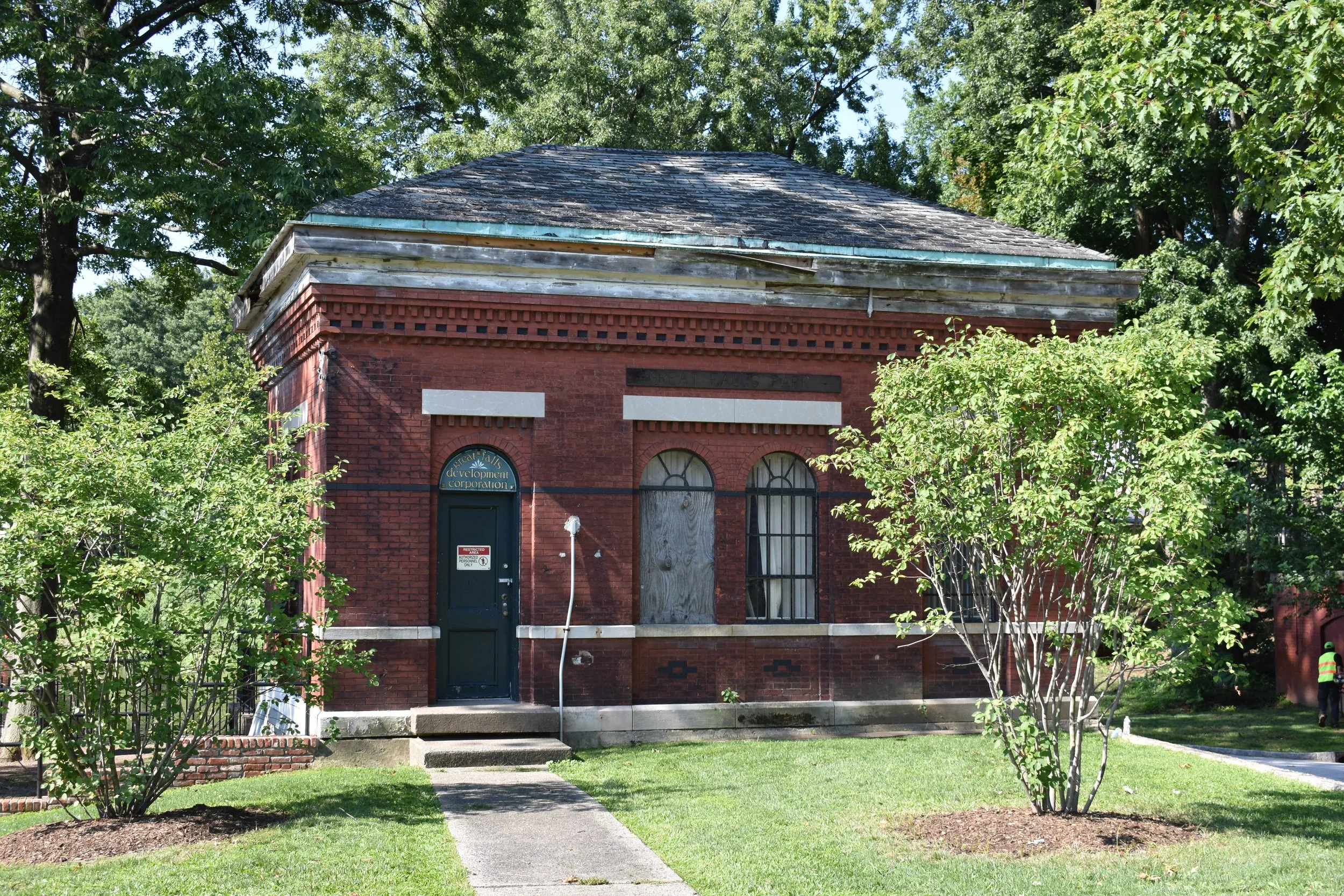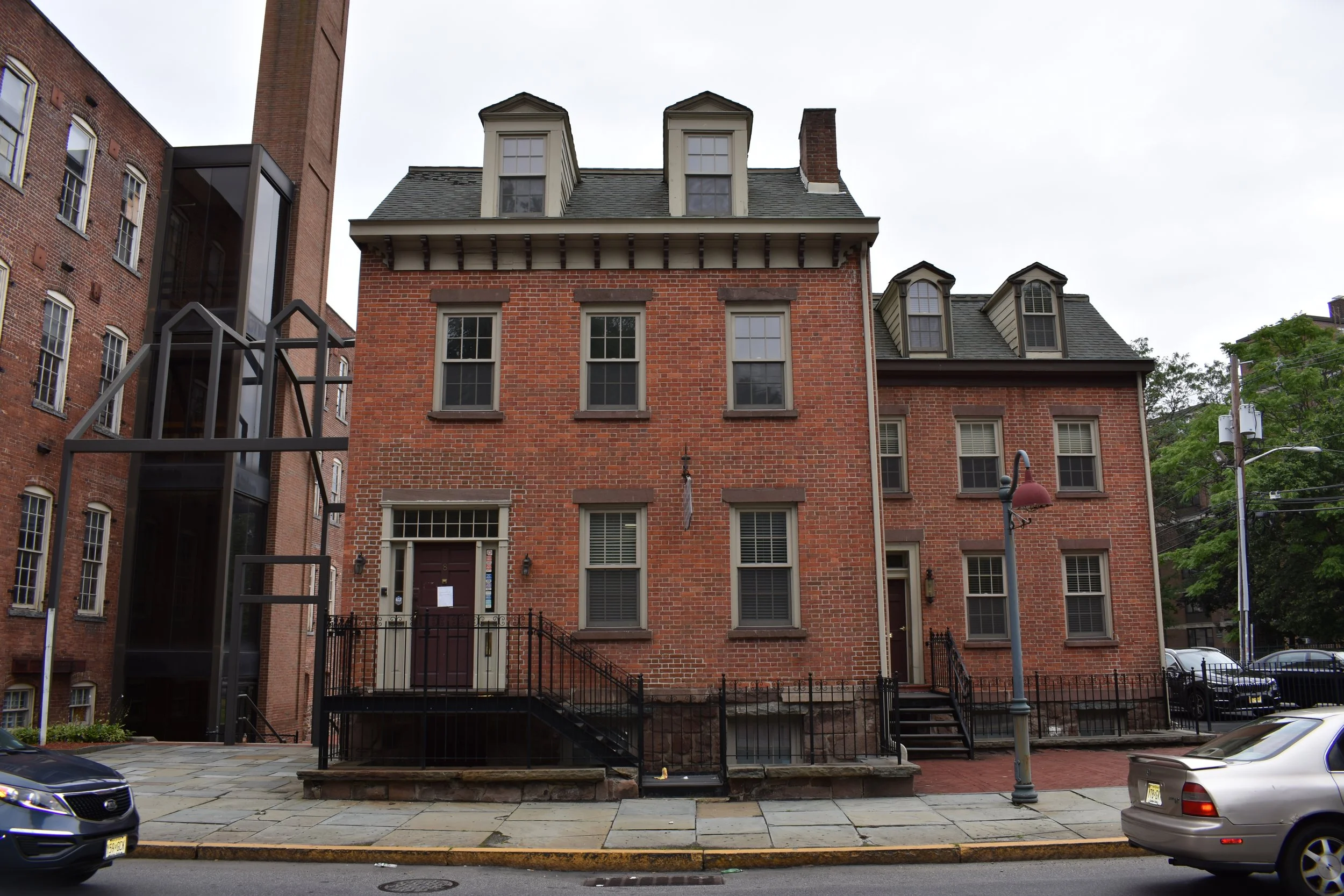Great Falls S.U.M. Historic District
Paterson, New Jersey | 2017 - 2018, 2019 - 2020
National Historic Landmark Update: Survey + Nomination
Project Team: Randall Mason, Molly Lester, Julia Cohen
[Official approval of nomination pending]
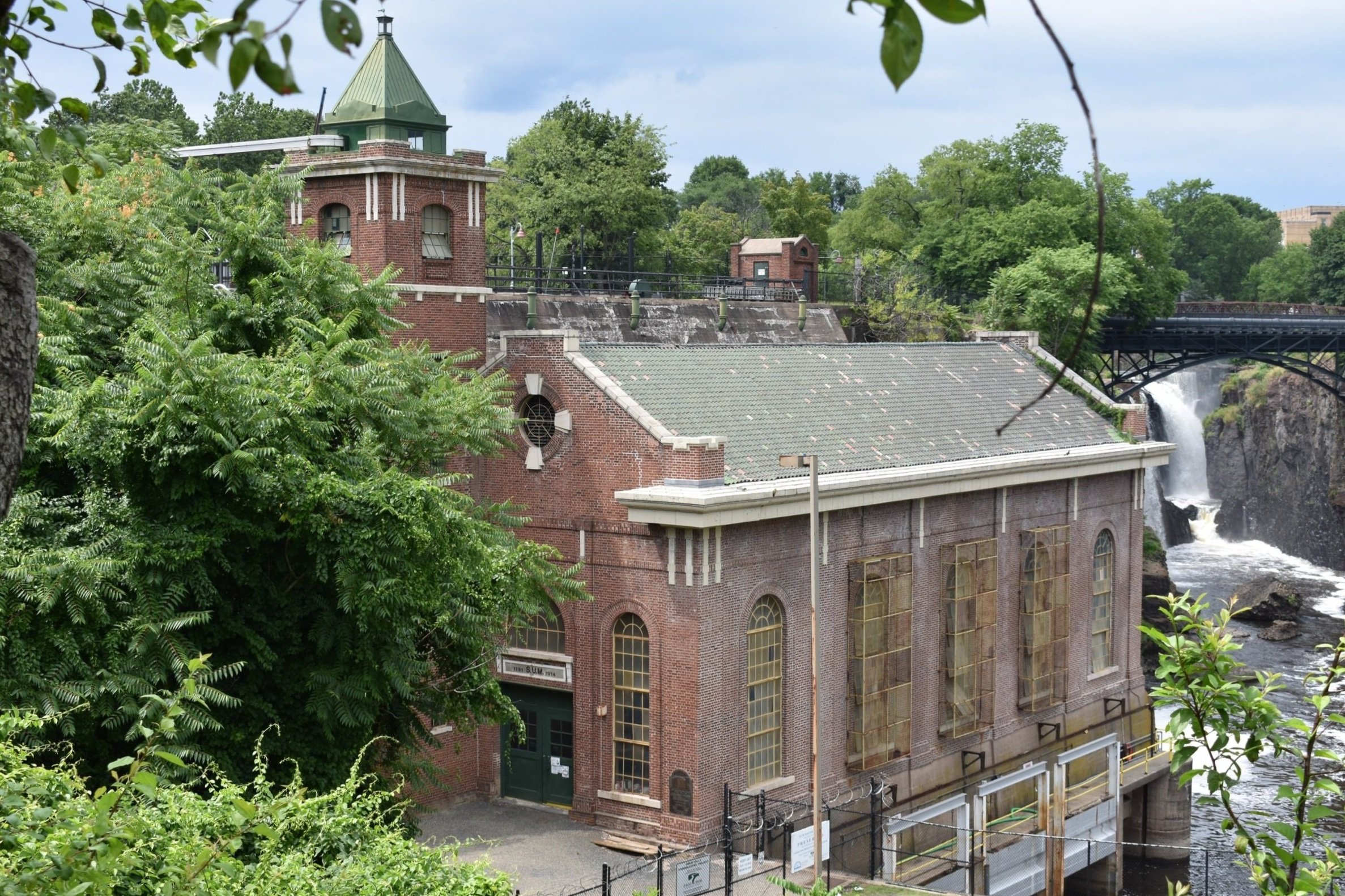
Summary Statement of Significance
(NHL Section 5)
The Great Falls/S.U.M. Historic District in Paterson, New Jersey, is nationally significant as one of the earliest and most important industrial quarters in the United States. The district, which is located in Paterson’s urban core and encompasses the Great Falls of the Passaic River, made substantial and significant contributions to the development of the American economy and manufacturing. The area owes its development to the 1791 creation of the Society of Useful Manufactures (S.U.M.), a business interest organized by United States Secretary of the Treasury Alexander Hamilton and others to assert American independence from British industry in the years after the American Revolution. Driven by Hamilton’s desire to establish an industrial counterpart to America’s long-established agrarian economy, the S.U.M. commissioned the design of an elaborate raceway system in order to harness the water power of the Great Falls and encourage new industries. The resulting raceways and tailraces are a significant engineering achievement, as they supported the establishment of several manufacturers with nationally significant profiles in the 18th, 19th, and 20th centuries.
Unlike other contemporary industrial communities that were established and planned by a single company (e.g. Coltsville, Pullman), the Great Falls/S.U.M. Historic District has consistently accommodated a range of products and proprietors, cultivating a diverse industrial ecosystem that addresses all dimensions of its employers’ and laborers’ lives: the district includes resources associated with labor, housing, commerce, and social associations.
The S.U.M. charter extended from 1791 to 1945—a lifespan that constitutes the period of significance for the historic district. Throughout those centuries, the Great Falls/S.U.M. historic district was consistently characterized by generations of immigration and (in related movements) labor disputes. Labor strikes were organized within the district boundaries in the 19th and 20th centuries, a key representation of the interconnected relationship between immigration, migration, industrialization, and urbanization in the development of the American economy.
The Great Falls/S.U.M. Historic District is nationally significant based on the following National Historic Landmark criteria: Criterion 1, for the district’s association with nationally-significant labor organizations and protests, related to concurrent immigration patterns; Criterion 2, for its association with Alexander Hamilton, during the same time when he served as the United States Secretary of the Treasury; and under Criteria 4 and 5, for the innovation of the district’s raceway infrastructure, which was critical to the development of nationally-significant industries and Paterson’s urban core.
Summary Description + Integrity
(NHL Section 6)
The Great Falls/S.U.M. Historic District in Paterson, New Jersey, is nationally significant because its resources represent one of the most important industrialized counterparts to the agrarian economy in early America. The district encompasses the Great Falls of the Passaic River, a natural water feature that supplied water power to an elaborately engineered raceway system, which served as the backbone of Paterson’s industrial development beginning in the 18th century. The Society for Useful Manufactures (S.U.M.) was established in 1791 to develop the water power system around the Great Falls, and existed in various incarnations through 1945, when the City of Paterson purchased the S.U.M. charter. The historic district is organized around the resources developed during the tenure of the S.U.M.; it also encompasses the Paterson Great Falls National Historical Park, which was authorized in 2009. In contrast with other single-industry towns established in the 19th century, the Great Falls/S.U.M. Historic District’s contributing resources represent a heterogeneous industrial ecosystem in Paterson’s urban core.
This nomination expands on the previous designation of the Great Falls/S.U.M. NHL Historic District, including its boundary increase that encompassed the Argus Mill, to include adjacent industrial, commercial, and residential properties that share a similar association and period of significance with the designated resources. The proposed boundary expansion encompasses industrial resources on Totowa Avenue, residential resources on Ryle Avenue and Wayne Avenue, institutional resources on Van Houten Street and Broadway, as well as the southern section of the Dublin neighborhood (as bounded in the 2010 intensive-level survey by Hunter Research, Inc.). This “South Dublin” neighborhood contains Paterson’s oldest concentration of vernacular workers’ housing and is a significant complement to the industrial buildings and water power raceways within the Great Falls/S.U.M. NHL Historic District.
This expansion is appropriate because it embraces industrial, commercial, institutional, and residential resources that are immediately adjacent to and consistent with the resources within the existing historic district, but were excluded from the original boundaries. The expanded historic district not only reflects the narrative of this important industrial enterprise, but also serves as an example of a mixed industrial district, with worker housing, commercial buildings, and social institutions located in close proximity to the neighborhood’s core industries. This nomination also identifies key resources not previously addressed in the historic district’s National Historic Landmark nominations, including the footbridges that link the network of downtown streets to the factories, knitting the industrial resources into their urban contexts.
As preparation for this updated nomination, the nominator led a field survey of the historic district in 2017, identifying any resources that have been demolished since the historic district was designated and evaluating the significance and integrity of all extant resources.
Integrity of the Historic District
Within the historic district boundaries (as proposed in this nomination update), the majority of resources retain integrity and convey their historical associations. This includes the raceways and most of the industrial buildings. Many, if not most, of the industrial buildings have been altered in some way, but alterations are generally minor (e.g. infill of windows) and do not detract from the overall design, materials, and associations of the buildings.
The buildings within the former Allied Textile Printing Corporation were severely damaged in a series of fires in the 1980s, and their buildings are no longer intact. However, these resources continue to the historic district based on their potential to yield information of archaeological value.
A limited number of resources have substantially deteriorated, or have been demolished, since the historic district’s nomination was last amended. This includes structures on Ryle Avenue that were designated as part of the NHL Historic District but were demolished at various points between 2012 and 2017; their lots are currently vacant and are represented as such on this nomination’s maps. Although these resources are considered partial or total losses, they do not detract from the overall integrity of the historic district.
The proposed period of significance for the historic district (as updated in this nomination) is 1791-1945, based on the tenure of the Society of Useful Manufactures. As a district, the Great Falls/S.U.M. NHL Historic District retains a high degree of integrity with respect to location, design, setting, materials, workmanship, feeling, and association. The district retains its integrity of location as most of its significant features, including the water power infrastructure and several of the district’s oldest mills, remain intact in their historic locations. The district retains integrity of design because its water power infrastructure and other resources are consistent with their historic physical expression. The district’s setting is key to its significance, as the contributing resources remain in close proximity to the Great Falls; their physical, visual, and operational relationship with this context was critical to the development of this industrial core. The historic district retains integrity of materials and workmanship based on construction methods of the water power infrastructure and the district’s significant mills and vernacular residential resources. Finally, the district retains integrity of feeling and association because it remains legible as a heterogeneous industrial ecosystem, consistent with the historic conditions cultivated by the Society of Useful Manufactures during the period of significance.
S.U.M. Gatehouse, 2017. Photo by the nomination author.
S.U.M. Upper Raceway, 2017. Photo by the nomination author.
Ivanhoe Wheelhouse. Photo by the nomination author.
Rogers Locomotive Company Frame Fitting Shop and Administrative Building, 2017. Photo by the nomination author.
Rogers Locomotive Company Millwright Shop, 2017. Photo by the nomination author.
Dolphin Jute Mill Complex, 2017. Photo by the nomination author.
Rogers Locomotive Company Erecting Shop, 2017. Photo by the nomination author.
Great Falls Arch Bridge, 2017. Photo by the nomination author.
S.U.M. Passaic Street Bridge, 2017. Photo by the nomination author.
Essex Mill, 2017. Photo by the nomination author.
S.U.M. Middle Raceway, 2017. Photo by the nomination author.
Raceway footbridges, 2017. Photo by the nomination author.
Rogers Locomotive Storage Building, on the S.U.M. Upper Raceway's tailrace. Photo by the nomination author, 2017.
Remains of 1876 Steam and Boiler Plant, 2017. Photo by the nomination author.
Daniel Thompson and John Ryle Houses, 2017. Photo by the nomination author.
